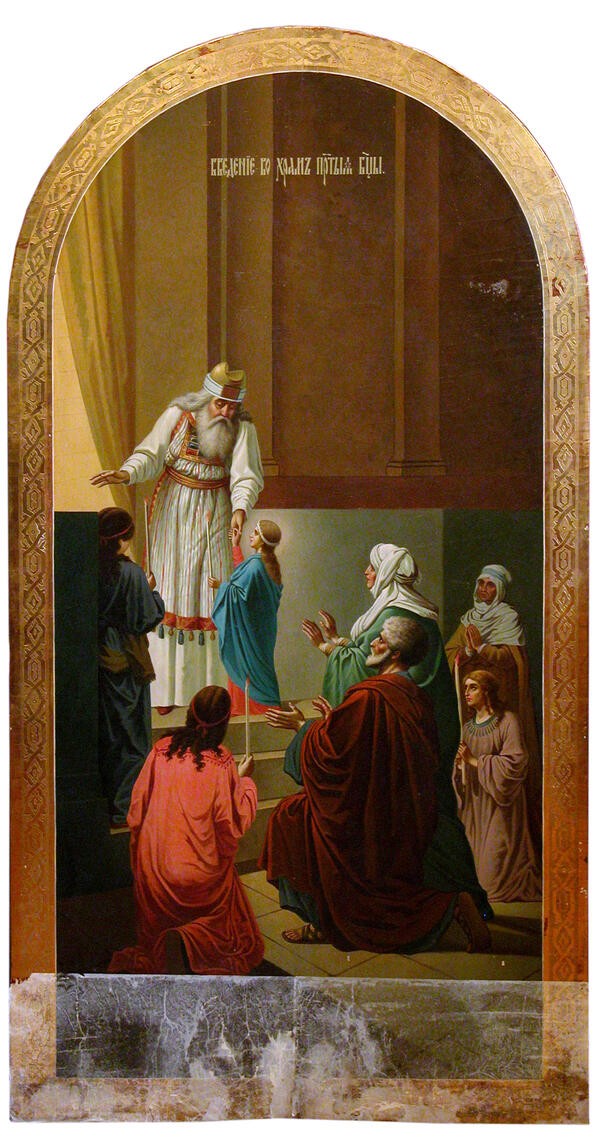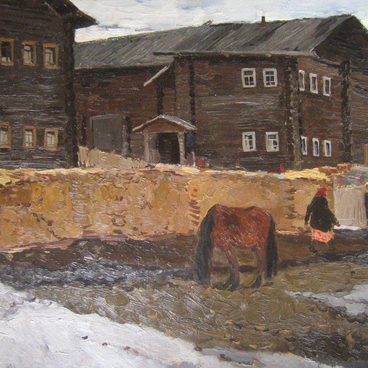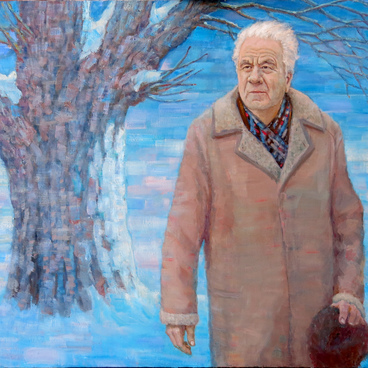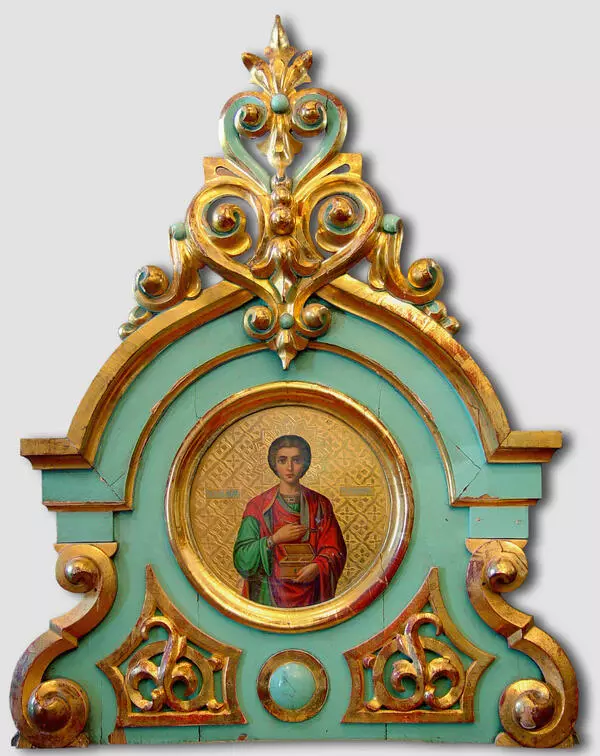In Orthodox calendar the Twelve Great Feasts hold the special place. They are the most important annual feasts dedicated to the history of Church. The latest one in terms of establishment is The Presentation of the Blessed Virgin Mary. It is celebrated in late November. The feast places believers’ attention to the page of the Church history when Anne and Joachim brought their three-year-old daughter Mary to the temple in Jerusalem, where she was given into the care of archpriest Zechariah. The girl lived in the temple till she was 15. To the best of her ability she did different jobs and finally she was put in charge of making a church velum. The Archangel Gabriel, a messenger sent to Mary by God, met her during that process (Annunciation).
This icon is important for the researchers of the religious art because it’s fully attributed. It was painted in the workshop of Joseph Khlopotov, who was a petit bourgeois from Yekaterinburg. Later he moved to Ishim and took Pavel Pestov, a painter from Perm, and a few gravers and gilders with him. The special places for gilding, graving, and other works were arranged in the workshop. Apart from private commissions painters from the Khlopotov’s workshop worked on the iconostases, which were afterwards moved and installed. The workshop flourished. One can estimate the scale of its production by the fact that iconostases made for a few villages of different districts (Kurgan, Ishim, Tobolsk, and Omsk) were in production there at the same time. Also the painters worked on the church interiors and decorated the vaults, moulding, and the windows with vignettes and ornaments. Some ornaments and decorations survived to this day.
The Presentation of the Blessed Virgin Mary icon wasn’t made in the canonic manner. The saints were put into the real church environment; all proportions were correct compared to the human size. The icon looks more like the academic painting, smooth, conservative, realistic and lack of emotion. For the Khlopotov’s workshop it was common to use the images of Fyodor Bruni, Timofey Neff, and other academic painters. The icon is more than 150 cm in high, probably it was commissioned for the Feast tier of Iconostasis. The rich colour palette of the work deserves special attention for its variety of colours, shades of red and green, play of light and shadow.
This icon is important for the researchers of the religious art because it’s fully attributed. It was painted in the workshop of Joseph Khlopotov, who was a petit bourgeois from Yekaterinburg. Later he moved to Ishim and took Pavel Pestov, a painter from Perm, and a few gravers and gilders with him. The special places for gilding, graving, and other works were arranged in the workshop. Apart from private commissions painters from the Khlopotov’s workshop worked on the iconostases, which were afterwards moved and installed. The workshop flourished. One can estimate the scale of its production by the fact that iconostases made for a few villages of different districts (Kurgan, Ishim, Tobolsk, and Omsk) were in production there at the same time. Also the painters worked on the church interiors and decorated the vaults, moulding, and the windows with vignettes and ornaments. Some ornaments and decorations survived to this day.
The Presentation of the Blessed Virgin Mary icon wasn’t made in the canonic manner. The saints were put into the real church environment; all proportions were correct compared to the human size. The icon looks more like the academic painting, smooth, conservative, realistic and lack of emotion. For the Khlopotov’s workshop it was common to use the images of Fyodor Bruni, Timofey Neff, and other academic painters. The icon is more than 150 cm in high, probably it was commissioned for the Feast tier of Iconostasis. The rich colour palette of the work deserves special attention for its variety of colours, shades of red and green, play of light and shadow.




